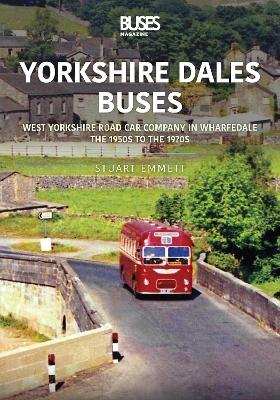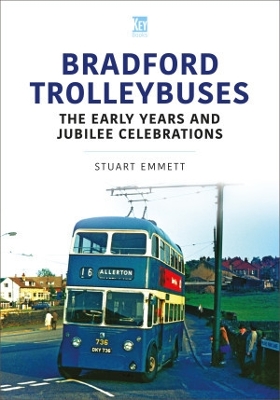Britain's Buses
3 total works
Yorkshire Dales Buses: West Yorkshire Road Car Company in Wharfedale
by Stuart Emmett
Published 2 September 2022
The West Yorkshire Road Car Company's routes from Skipton and Ilkley up into Wharfedale, Wensleydale and Swaledale are some of the most scenic in Great Britain, and they are captured in this volume of historic bus photographs, taken from the 1950s to the 1970s by some of the finest...Read more
The West Yorkshire Road Car Company's routes from Skipton and Ilkley up into Wharfedale, Wensleydale and Swaledale are some of the most scenic in Great Britain, and they are captured in this volume of historic bus photographs, taken from the 1950s to the 1970s by some of the finest photographers in their field. Using his first-hand knowledge of West Yorkshire's network, Stuart Emmett takes the reader on a journey in Upper Wharfedale, passing by countless sheep farms along the grass-patched limestone river valleys as he goes from hamlets and small villages like Grassington to market towns like Skipton and Otley, and the spa town of Ilkley. The enduring Yorkshire landscape, which has been used for many films and TV programmes, such as Calendar Girls, All Creatures Great and Small and Emmerdale, complements the little-changed street scenes and villages to give a fascinating backdrop to this captivating collection of more than 170 photographs, many of which are previously unpublished or have rarely been seen in print.
Bradford Trolleybuses: The Early Years and Jubilee Celebrations
by Stuart Emmett
Published 7 November 2022
Bradford trolleybuses were the first and the last' in the UK - first introduced in 1911 and last used in 1972. With only one flat road out of the centre, appropriately called Canal Road, Bradford city centre is in a bowl' surround by 200 to 400 metre hills. Therefore,...Read more
Bradford trolleybuses were the first and the last' in the UK - first introduced in 1911 and last used in 1972. With only one flat road out of the centre, appropriately called Canal Road, Bradford city centre is in a bowl' surround by 200 to 400 metre hills. Therefore, the operating environment in Bradford was perfect for quiet passenger transport that soared up the hills that surround the city. This book focuses on the 50th anniversary year of 1961, and the 19 variations of trolleybuses used in that year are illustrated along with a fleet history from 1934 (many 1934 chassis were still working in 1961). It also details the second-hand trolleybuses Bradford bought after 1951 and the extensive rebuilding and rebodying programmes that ran from 1944. The changes in livery are fully explained and illustrated, with a look at the fleet bought new and those bought from other operators, and the depot structure and service vehicles used to maintain the network are also covered. Finally, the route history and development from 1911 is fully detailed. With over 180 images, this book, the first of two volumes on Bradford trolleybuses, showcases the trolleybuses at work on different routes around the city, returning them to their heyday of 1961.
This book follows on from Volume 1 and concludes the route history and development of the many interesting routes on the hills in Bradford. These are beautifully illustrated and show the ranges from sooty dark Victorian buildings to rural termini and the attendant changes with city redevelopment. Indeed, the...Read more
This book follows on from Volume 1 and concludes the route history and development of the many interesting routes on the hills in Bradford. These are beautifully illustrated and show the ranges from sooty dark Victorian buildings to rural termini and the attendant changes with city redevelopment. Indeed, the redevelopment of the city in the 1960s also provides a historical pictorial backdrop to the trolleybuses seen at work in the city.
The renaissance of Bradfords trolleybuses is described along with the reasons why it was such special system. After every rise, there must come a fall, and this started in Bradford soon after 1961. Whilst the future had looked good in 1960, with capital development planned, the fall and the final closure resulted from management changes, city centre development, major road changes and, finally, a definite close policy. Although the decline was a slow one, it did, however, gather momentum as final closure approached. All of the closures and attendant fleet losses are fully covered, however there is no �final day' coverage, as this the book (and Volume 1) seek to principally give light to the best and peak times of the system.
The renaissance of Bradfords trolleybuses is described along with the reasons why it was such special system. After every rise, there must come a fall, and this started in Bradford soon after 1961. Whilst the future had looked good in 1960, with capital development planned, the fall and the final closure resulted from management changes, city centre development, major road changes and, finally, a definite close policy. Although the decline was a slow one, it did, however, gather momentum as final closure approached. All of the closures and attendant fleet losses are fully covered, however there is no �final day' coverage, as this the book (and Volume 1) seek to principally give light to the best and peak times of the system.



